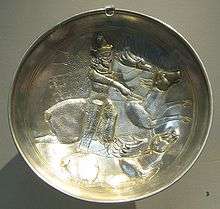371
| Millennium: | 1st millennium |
|---|---|
| Centuries: | 3rd century · 4th century · 5th century |
| Decades: | 340s · 350s · 360s · 370s · 380s · 390s · 400s |
| Years: | 368 · 369 · 370 · 371 · 372 · 373 · 374 |
| 371 by topic | |
| Politics | |
| State leaders – Sovereign states | |
| Birth and death categories | |
| Births – Deaths | |
| Establishment and disestablishment categories | |
| Establishments – Disestablishments | |
| Gregorian calendar | 371 CCCLXXI |
| Ab urbe condita | 1124 |
| Assyrian calendar | 5121 |
| Bengali calendar | −222 |
| Berber calendar | 1321 |
| Buddhist calendar | 915 |
| Burmese calendar | −267 |
| Byzantine calendar | 5879–5880 |
| Chinese calendar | 庚午年 (Metal Horse) 3067 or 3007 — to — 辛未年 (Metal Goat) 3068 or 3008 |
| Coptic calendar | 87–88 |
| Discordian calendar | 1537 |
| Ethiopian calendar | 363–364 |
| Hebrew calendar | 4131–4132 |
| Hindu calendars | |
| - Vikram Samvat | 427–428 |
| - Shaka Samvat | 292–293 |
| - Kali Yuga | 3471–3472 |
| Holocene calendar | 10371 |
| Iranian calendar | 251 BP – 250 BP |
| Islamic calendar | 259 BH – 258 BH |
| Javanese calendar | 253–254 |
| Julian calendar | 371 CCCLXXI |
| Korean calendar | 2704 |
| Minguo calendar | 1541 before ROC 民前1541年 |
| Nanakshahi calendar | −1097 |
| Seleucid era | 682/683 AG |
| Thai solar calendar | 913–914 |
| Wikimedia Commons has media related to 371. |
Year 371 (CCCLXXI) was a common year starting on Saturday (link will display the full calendar) of the Julian calendar. At the time, it was known as the Year of the Consulship of Augustus and Petronius (or, less frequently, year 1124 Ab urbe condita). The denomination 371 for this year has been used since the early medieval period, when the Anno Domini calendar era became the prevalent method in Europe for naming years.
Events
By place
Roman Empire
- The fortified cities of the Danube, with Sirmium (Pannonia) at the forefront, contribute to stop an invasion of the Quadi.
Persia
- The neo-Persian Empire attains the zenith of its power under King Shapur II, as the Romans renew their war against Persia. Hostilities will continue for the next 5 years.
Asia
- Baekje forces storm the Goguryeo capital in P'yongyang (Korea).
By topic
Arts and sciences
Religion
- Augustine of Hippo, age 17, travels to Carthage to continue his education in rhetoric.
- Martin of Tours becomes bishop of Tours (approximate date).
Births
- Dao Wu Di, emperor of Northern Wei (d. 409)
- Valentinian II, Roman Emperor (d. 392)
Deaths
- August 1 – Eusebius of Vercelli, bishop and saint
- Gogugwon, king of Goguryeo (Korea)
- Hilarion, anchorite and saint (b. 291)
- Lucifer Calaritanus, founder of the Luciferian sect (approximate date)
- Zeno of Verona, bishop of Verona and martyr (approximate date)
References
This article is issued from Wikipedia - version of the 8/28/2016. The text is available under the Creative Commons Attribution/Share Alike but additional terms may apply for the media files.
